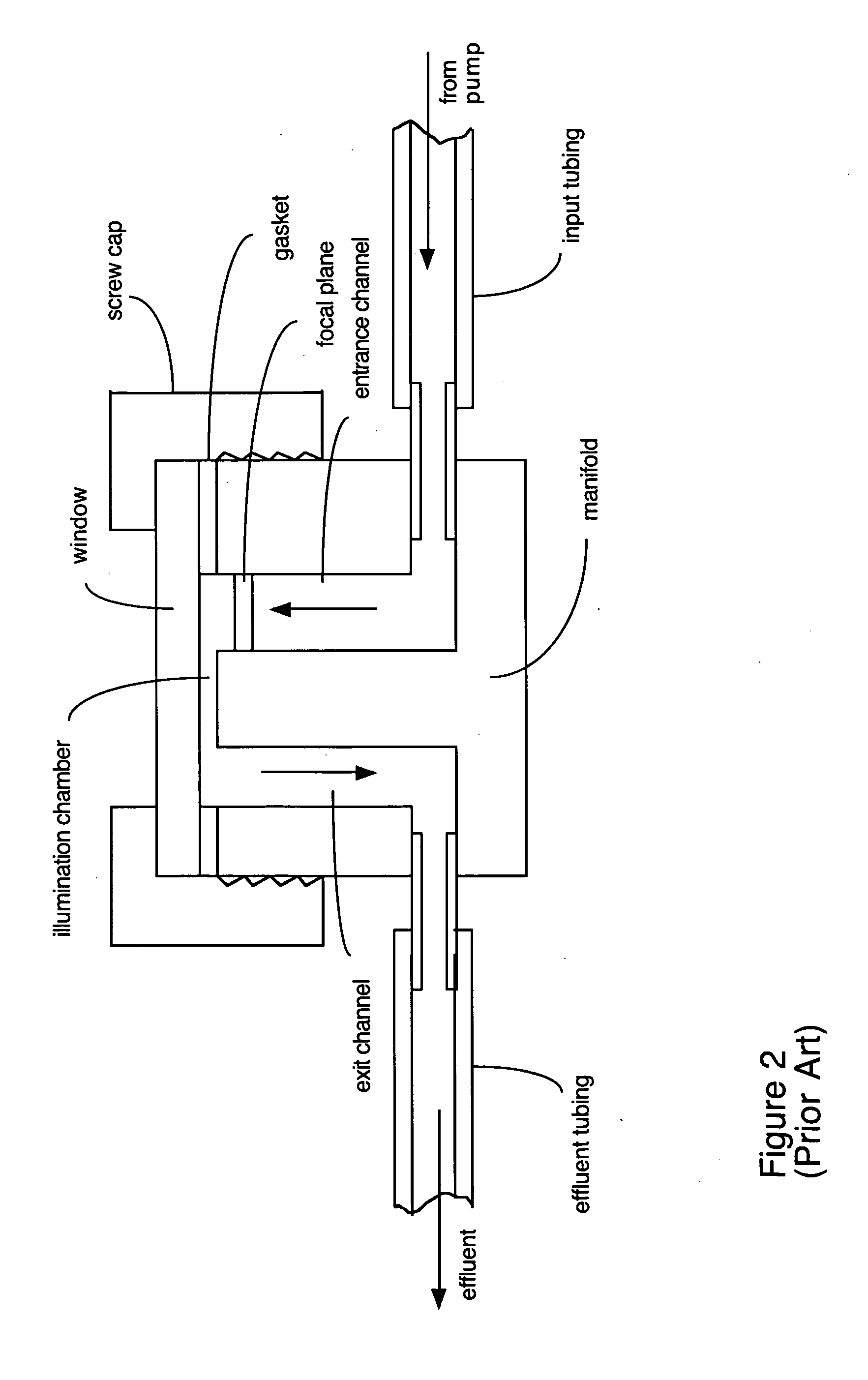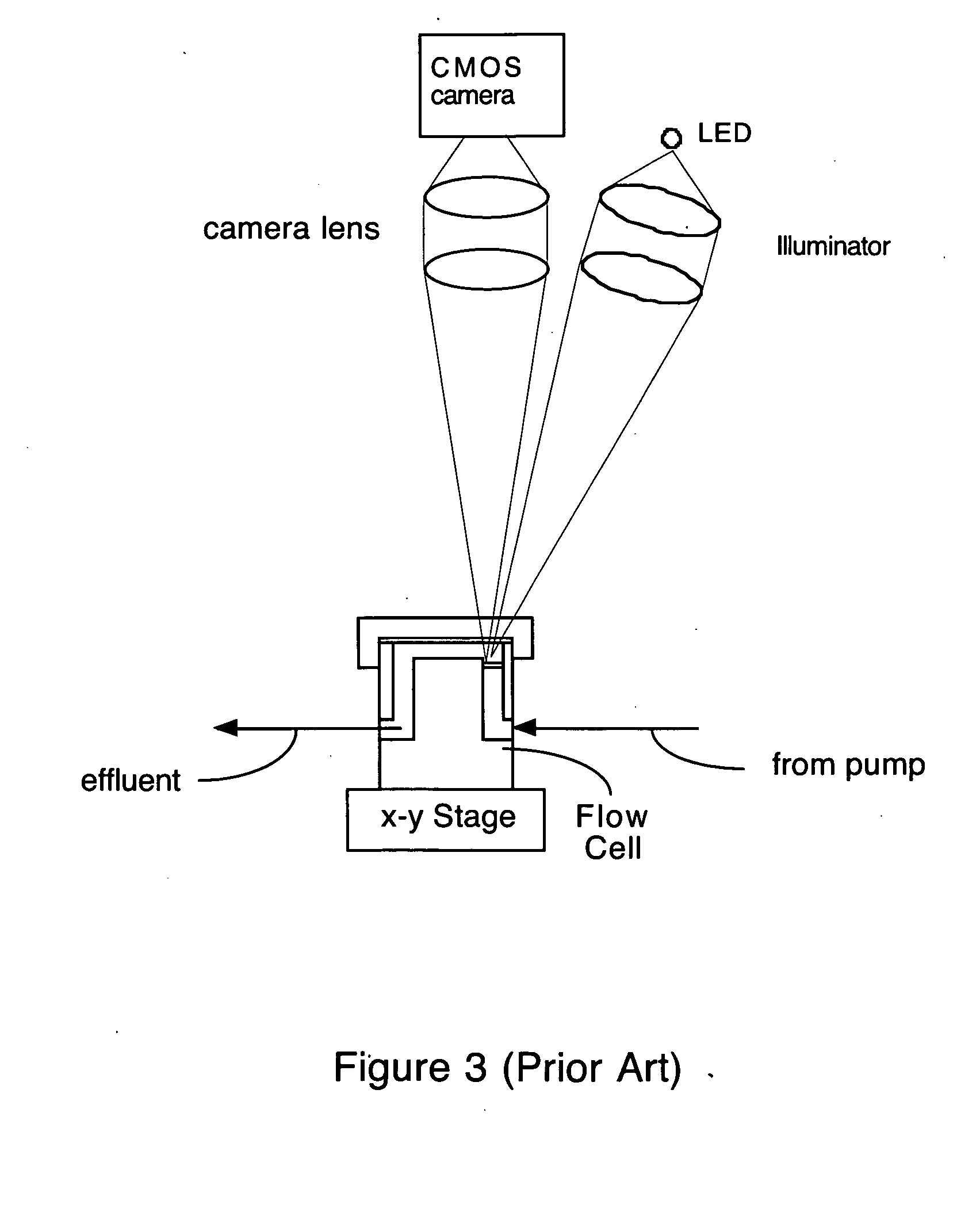Concentrating Microorganisms in Aqueous Solution Prior to Selective Staining and Detection
a technology of concentrating microorganisms and aqueous solution, which is applied in the field of concentrating microorganisms in aqueous solution prior to selective staining and detection, can solve the problem of cost-prohibitive detection of small numbers of selected microorganisms in large volumes of water
- Summary
- Abstract
- Description
- Claims
- Application Information
AI Technical Summary
Benefits of technology
Problems solved by technology
Method used
Image
Examples
Embodiment Construction
[0020]The present invention allows fluorescence measurements of specific microorganisms in a fluid sample, in particular blood, blood products, freshwater, and saltwater. These are applications where detection of smaller numbers of target microorganisms in large volumes of water is cost-prohibitive, owing to the large volume of expensive dye necessary to specifically tag the target microorganisms (e.g. antibody dyes and fluorescent in situ hybridization dyes). The process utilizes a less expensive dye (or natural fluorescence) to separate out a smaller volume of specimen containing most of the microorganisms of interest (as well as other microorganisms present). The smaller volume is then dyed with a more expensive dye specific to the target microorganisms and then examined for target microorganisms. The relatively inexpensive dye separates cells from the aqueous sample that include, as a subset, target cells of interest. The invention may use a Fountain Flow™ cytometer (refer to FI...
PUM
| Property | Measurement | Unit |
|---|---|---|
| Fraction | aaaaa | aaaaa |
| Volume | aaaaa | aaaaa |
| Volume | aaaaa | aaaaa |
Abstract
Description
Claims
Application Information
 Login to View More
Login to View More - R&D
- Intellectual Property
- Life Sciences
- Materials
- Tech Scout
- Unparalleled Data Quality
- Higher Quality Content
- 60% Fewer Hallucinations
Browse by: Latest US Patents, China's latest patents, Technical Efficacy Thesaurus, Application Domain, Technology Topic, Popular Technical Reports.
© 2025 PatSnap. All rights reserved.Legal|Privacy policy|Modern Slavery Act Transparency Statement|Sitemap|About US| Contact US: help@patsnap.com



